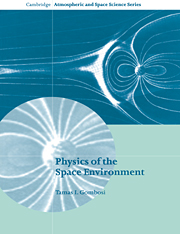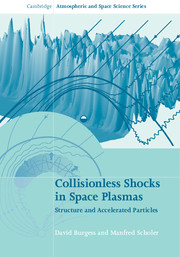Physics of Space Plasma Activity
Space plasma is so hot that the atoms break up into charged particles which then become trapped and stored in magnetic fields. When critical conditions are reached the magnetic field breaks up, releasing a large amount of energy and causing dramatic phenomena. The largest space plasma activity events observed in the solar system occur on the Sun, when coronal mass ejections expel several billion tons of plasma mass into space. This book provides a coherent and detailed treatment of the physical background of large plasma eruptions in space. It provides the background necessary for dealing with space plasma activity, and allows the reader to reach a deeper understanding of this fascinating natural event. The book employs both fluid and kinetic models, and discusses the applications to magnetospheric and solar activity. This will form an interesting reference for graduate students and academic researchers in the fields of astrophysics and plasma physics.
- Defines space plasma activity as a separate entity within space plasma physics, which provides the reader with a fairly complete and coherent picture
- Provides readers with the basic knowledge necessary for doing active research in the field
- Separates applications from theoretical developments
Reviews & endorsements
Review of the hardback: 'This volume concentrates on one major topic of considerable theoretical interest … This is not a book for beginners! The two central sections of the book then represent in essence a coherent overview of the theoretical researches pioneered by the author and his colleagues at Ruhr-Universität Bochum over the past thirty years or so, combined with relevant results drawn from the work of others. … Overall, this is a very worthwhile work that coherently draws together a substantial body of research literature. It can be thoroughly recommended to those of a theoretical inclination for its rigorous but clear and physically-motivated treatment of a topic of central importance to the physics of large-scale plasmas in our Solar System, and most probably those beyond.' The Observatory
Review of the hardback: '… concise and easy to read … exhaustively referenced … Schindler's excellent monograph represents a rich and deep resource of elegantly presented information about the fundamentals of activity in space plasmas. This volume should be on the bookshelf of every researcher working to understand this complex phenomenon.' Journal of Plasma Physics
Review of the hardback: '…valuable…' Surveys in Geophysics
Review of the hardback: 'The subject is not only of inherent academic interest but also of practical relevance to human society at the start of the third millennium.' Surveys in Geophysics
Product details
April 2010Paperback
9780521142366
524 pages
244 × 170 × 27 mm
0.83kg
Available
Table of Contents
- Preface
- 1. Introduction
- Part I. Setting the Scene:
- 2. Sites of activity
- 3. Plasma models
- Part II. Quiescence:
- 4. Introduction
- 5. Magnetohydrodynamic states
- 6. Particle picture of steady states
- 7. A unified theory of steady states
- 8. Quasi-static evolution and thin current sheets (TCS)
- Part III. Dynamics:
- 9. Nonideal effects
- 10. Selected macroinstabilities
- 11. Magnetic reconnection
- 12. Aspects of bifurcation and nonlinear dynamics
- Part IV. Applications:
- 13. Magnetospheric activity
- 14. Models of solar activity
- 15. Discussion
- Appendix 1. Unified theory: details and derivations
- Appendix 2. Variational principle for collisionless plasmas
- Appendix 3. Symbols and fundamental constants
- References
- Index.







